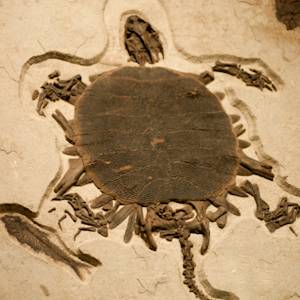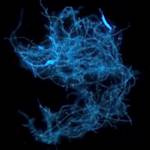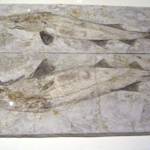3rd Mass Extinction, End Permian
252 million BCE • Earth
"At the end of the Permian, conditions became unsuitable for most life and about 95% of marine species were eliminated as well as 70% of terrestrial species in a very short period of time, in geologic terms. It was also one of the few known mass extinctions of insects. Many plant species also went extinct. There is fossil evidence that there were once vast coniferous forests in modern day Europe that died out in the Permian. Fungi were not impacted as severely as other organisms, likely because of the abundance of dead plant and animal material available for their consumption. Because of the enormous number of species that became extinct, the P-Tr mass extinction is nicknamed “The Great Dying” . . . One possible cause of the extinction could have been a large volcanic event that produced flood basalts, also known as Siberian Traps. The eruption covered around 2 million square kilometers with lava and was one of the largest volcanic events in Earth’s history. The eruptions may have caused large amounts of carbon dioxide to be released into the atmosphere and caused a large-scale global warming effect of more than 10°C on land and around 8°C on the ocean surface in a short period of time. The eruptions may have also caused acid aerosols and dust clouds to be released into the atmosphere which blocked out the sun and prevented photosynthesis from occurring, effectively causing many food chains to collapse."
Jackson Chambers and Julio Lacerda, "The Great Permian Extinction: When all life on Earth almost vanished," Earth Archives.
Moschops capensis skeleton. American Museum of Natural History. Public Domain via wikimedia commons


Learn about Maya Lin’s fifth and final memorial: a multi-platform science based artwork that presents an ecological history of our world - past, present, and future.

Discover ecological histories and stories of former abundance, loss, and recovery on the map of memory.

Learn how we can reduce our emissions and protect and restore species and habitats – around the world.

See how art can help us rethink the problems we face, and give us hope that each one of us can make a difference.

Help make a global memorial something personal and close to home. Share your stories of the natural world.


